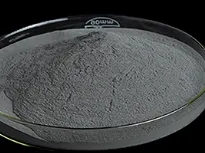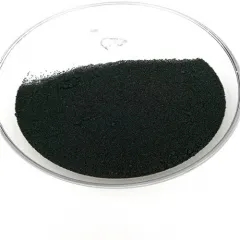Introduction to Titanium Disilicide: A Versatile Refractory Substance for Advanced Technologies
Titanium disilicide (TiSi ₂) has become an essential material in contemporary microelectronics, high-temperature architectural applications, and thermoelectric power conversion due to its one-of-a-kind mix of physical, electrical, and thermal residential or commercial properties. As a refractory steel silicide, TiSi ₂ displays high melting temperature level (~ 1620 ° C), superb electric conductivity, and good oxidation resistance at elevated temperatures. These characteristics make it a necessary component in semiconductor gadget manufacture, particularly in the development of low-resistance contacts and interconnects. As technical demands push for faster, smaller, and extra reliable systems, titanium disilicide continues to play a calculated function across multiple high-performance sectors.
(Titanium Disilicide Powder)
Architectural and Digital Features of Titanium Disilicide
Titanium disilicide takes shape in 2 main stages– C49 and C54– with distinct structural and electronic actions that influence its efficiency in semiconductor applications. The high-temperature C54 stage is specifically preferable because of its reduced electrical resistivity (~ 15– 20 μΩ · centimeters), making it perfect for usage in silicided gateway electrodes and source/drain calls in CMOS tools. Its compatibility with silicon handling strategies permits smooth integration right into existing manufacture circulations. Furthermore, TiSi two exhibits modest thermal development, lowering mechanical tension throughout thermal cycling in integrated circuits and improving long-term integrity under functional conditions.
Function in Semiconductor Manufacturing and Integrated Circuit Style
One of one of the most considerable applications of titanium disilicide lies in the field of semiconductor production, where it serves as a vital material for salicide (self-aligned silicide) processes. In this context, TiSi â‚‚ is uniquely based on polysilicon gates and silicon substratums to minimize contact resistance without compromising device miniaturization. It plays a critical function in sub-micron CMOS technology by allowing faster switching speeds and reduced power consumption. Regardless of challenges associated with stage improvement and pile at heats, ongoing research concentrates on alloying techniques and process optimization to improve stability and performance in next-generation nanoscale transistors.
High-Temperature Architectural and Safety Finishing Applications
Past microelectronics, titanium disilicide demonstrates extraordinary capacity in high-temperature settings, specifically as a protective finishing for aerospace and industrial parts. Its high melting factor, oxidation resistance approximately 800– 1000 ° C, and moderate solidity make it suitable for thermal obstacle coatings (TBCs) and wear-resistant layers in turbine blades, burning chambers, and exhaust systems. When integrated with various other silicides or ceramics in composite materials, TiSi two boosts both thermal shock resistance and mechanical integrity. These qualities are significantly valuable in protection, area expedition, and progressed propulsion modern technologies where severe efficiency is required.
Thermoelectric and Energy Conversion Capabilities
Recent research studies have actually highlighted titanium disilicide’s encouraging thermoelectric residential or commercial properties, placing it as a prospect material for waste warm recovery and solid-state power conversion. TiSi â‚‚ exhibits a reasonably high Seebeck coefficient and modest thermal conductivity, which, when enhanced with nanostructuring or doping, can boost its thermoelectric performance (ZT worth). This opens brand-new methods for its use in power generation modules, wearable electronics, and sensing unit networks where compact, durable, and self-powered services are needed. Scientists are additionally discovering hybrid structures including TiSi â‚‚ with other silicides or carbon-based materials to additionally enhance energy harvesting capacities.
Synthesis Methods and Processing Difficulties
Producing premium titanium disilicide calls for exact control over synthesis parameters, consisting of stoichiometry, stage purity, and microstructural uniformity. Typical techniques consist of direct response of titanium and silicon powders, sputtering, chemical vapor deposition (CVD), and responsive diffusion in thin-film systems. Nevertheless, achieving phase-selective growth continues to be a challenge, particularly in thin-film applications where the metastable C49 stage tends to create preferentially. Innovations in rapid thermal annealing (RTA), laser-assisted processing, and atomic layer deposition (ALD) are being discovered to conquer these restrictions and enable scalable, reproducible manufacture of TiSi â‚‚-based parts.
Market Trends and Industrial Fostering Across Global Sectors
( Titanium Disilicide Powder)
The international market for titanium disilicide is increasing, driven by demand from the semiconductor industry, aerospace field, and arising thermoelectric applications. The United States And Canada and Asia-Pacific lead in fostering, with major semiconductor suppliers incorporating TiSi â‚‚ right into sophisticated logic and memory gadgets. Meanwhile, the aerospace and defense markets are buying silicide-based compounds for high-temperature architectural applications. Although different materials such as cobalt and nickel silicides are gaining grip in some segments, titanium disilicide remains favored in high-reliability and high-temperature niches. Strategic collaborations between material distributors, shops, and scholastic organizations are increasing product advancement and industrial deployment.
Environmental Considerations and Future Research Study Instructions
Regardless of its benefits, titanium disilicide faces examination relating to sustainability, recyclability, and ecological influence. While TiSi two itself is chemically secure and non-toxic, its manufacturing involves energy-intensive processes and unusual resources. Efforts are underway to develop greener synthesis courses using recycled titanium sources and silicon-rich commercial byproducts. Furthermore, researchers are investigating eco-friendly alternatives and encapsulation techniques to reduce lifecycle risks. Looking in advance, the combination of TiSi two with versatile substrates, photonic gadgets, and AI-driven products style platforms will likely redefine its application extent in future state-of-the-art systems.
The Road Ahead: Integration with Smart Electronics and Next-Generation Devices
As microelectronics continue to develop toward heterogeneous integration, flexible computing, and ingrained sensing, titanium disilicide is anticipated to adjust accordingly. Advances in 3D product packaging, wafer-level interconnects, and photonic-electronic co-integration might broaden its use beyond standard transistor applications. Moreover, the merging of TiSi two with expert system devices for anticipating modeling and procedure optimization can speed up innovation cycles and reduce R&D prices. With proceeded investment in product science and process design, titanium disilicide will certainly stay a foundation material for high-performance electronics and sustainable power modern technologies in the years to find.
Vendor
RBOSCHCO is a trusted global chemical material supplier & manufacturer with over 12 years experience in providing super high-quality chemicals and Nanomaterials. The company export to many countries, such as USA, Canada, Europe, UAE, South Africa,Tanzania,Kenya,Egypt,Nigeria,Cameroon,Uganda,Turkey,Mexico,Azerbaijan,Belgium,Cyprus,Czech Republic, Brazil, Chile, Argentina, Dubai, Japan, Korea, Vietnam, Thailand, Malaysia, Indonesia, Australia,Germany, France, Italy, Portugal etc. As a leading nanotechnology development manufacturer, RBOSCHCO dominates the market. Our professional work team provides perfect solutions to help improve the efficiency of various industries, create value, and easily cope with various challenges. If you are looking for titanium dioxide price, please send an email to: sales1@rboschco.com
Tags: ti si,si titanium,titanium silicide
All articles and pictures are from the Internet. If there are any copyright issues, please contact us in time to delete.
Inquiry us

